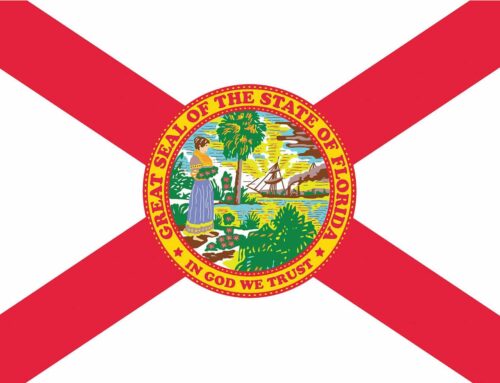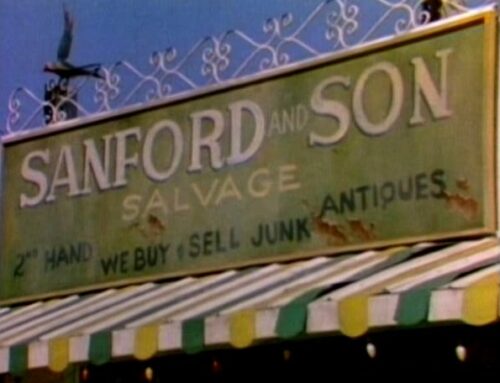Some car insurance covers flood damage. It depends on the type of policy you bought.
The best type of car insurance policy to own is a “full coverage” policy. That includes both collision and comprehensive insurance. Only a comprehensive insurance policy will cover your car against flood damage.
“Liability” insurance doesn’t cover damage to your own car in any event. And “collision” coverage only covers you in the event of a collision with another car or inanimate object. Only comprehensive coverage will cover damage or loss due to things like flood, hail, windstorms (hurricanes and tornados), theft, vandalism, pest infestation, and the like.
Of course, comprehensive coverage costs a little more. The exact amount depends on your location, carrier, type of car, your driving record and claims history, credit score, and a lot of other factors.
Stay Safe!
Let’s keep this to being a car insurance issue, and not a health insurance, disability insurance, or life insurance issue, mmmkay?
Here are a few safety items that come up when dealing with flooded cars:
Don’t try to use a standard household vacuum to clean and dry car interiors. They aren’t designed for moisture, and you could electrocute yourself. Use a wet-dry vac made for this purpose. Better yet, hire a professional cleanup company.
Don’t expose yourself to raw sewage or contaminated flood water.
Know your limits. If you don’t have the requisite knowledge and personal protective equipment, it is probably better leaving clean-up and recovery of vehicles to professionals.
Don’t wade into moving floodwaters trying to “save” your car. If the flood is severe, the car’s a loss.
Call your insurance company to file a claim. They’ll put an insurance adjustor on the case. Be aware that if flooding in your area is widespread, it could take a while before an adjustor can get to your car. However, insurance companies routinely send additional trained adjustors into areas affected by disasters to get claims processed quickly.
Most flooded cars are totaled.
If your car was submerged above the floorboards, chances are it will be totaled. The cost of repairs, in most cases, would swamp the value of the car. The moisture and gunk will cause too much damage to the drive train, engine, and electrical components, and contribute to corrosion in the undercarriage and axle. Water can cause engine vapor lock.
Adjustors won’t spend much time examining your car before totaling it.
When the carrier writes off your car as a total loss, you’ll receive the actual cash value of your car (accounting for mileage and depreciation right up to the day before your car was totaled), minus your deductible.
Exception: Some people who own classic, collector, modified cars and hot rods, or high-performance/exotic cars will buy an “agreed value” policy on their cars. In these cases, the insurance company and you will agree ahead of time on a dollar value for the car if it’s a total loss, accounting for all custom and aftermarket parts and modifications.
Some other policies are issued for replacement cost. That is, for some extra premium, some car insurance companies will pay you the amount it would take to replace your car. This would normally be a higher settlement than an actual cash value settlement.
If Insurance Denies Your Flood Damage Claim
Many people with cheap liability-only insurance, the state minimum coverage, or collision-only coverage are disappointed when they learn that their car insurance doesn’t cover flood or other environmental damage to their car.
If your insurance company denies your flood damage claim and you don’t have comprehensive coverage, you’re not going to successfully sue your insurance company.
What’s more likely is that your insurance company won’t total a car that should be totaled. That’s where having that video and photo evidence comes in handy.
You might also get your mechanic – not the one the insurance company recommends – to inspect your car and provide an itemized list of damaged parts and repairs needed. If the amount is high enough – over a specific percentage of the vehicle’s value depending on your state – the carrier is required by law to total the car.
Otherwise, they should pay for the cost of repairs, minus your deductible.
Just be aware that not all flood damage is obvious in photos and videos. Electrical components can short, and parts can fail over time due to advancing corrosion, etc.
What to Do If You Car Has Flood Damage
- Don’t try to start a submerged or flooded car. This could cause additional and severe damage to the engine.
- Limit the damage. Tow the car out of the water, if possible. When the weather dries out, open the doors, hood, and trunk. Let the car air out.
- Document the damage with photographs and video.
- Use dry towels, and or a wet-dry vacuum to vacuum moisture off the floorboards, carpet, upholstery, etc. Act quickly, to minimize the opportunity for mold to cause additional damage to your car.
- Check for water in the fuel. (You can use a siphon pump). Fuel and water don’t mix, so you’ll see clearly if there is water that has separated from the fuel. If water has contaminated the fuel system, drain it completely.
- Check the dipstick. If there are water droplets on your oil dipstick, or the oil looks like milk or light gray paint, that indicates that your cylinders may be broken and water or coolant has infiltrated the engine.
- Replace your spark plugs.
- Change all your fluids. Drain and flush your oil, coolant, fuel, power steering, and brake fluids. Do it again after you drive a few hundred miles. This helps prevent water from corroding these key automotive systems.
- Replace submerged fuse boxes and computer modules. (Prices will spike right after a hurricane or major flood).
The costs for all these repairs adds up fast, which is why most flooded cars get totaled if there is comprehensive insurance coverage on them.
If you don’t have comprehensive insurance coverage, these steps may help you get some more use out of your car if it was flooded in fresh water.
If it was flooded in salt water, like from a storm surge, the car’s probably a goner. Save yourself the expense and effort. Sell it for scrap metal and walk away.
All the more reason to carry comprehensive if you live anywhere near the ocean or anywhere prone to hurricanes or floods.
Add Comprehensive Coverage
Don’t get caught unprepared for the next flood or storm. And protect yourself against car theft. Contact us today to add comprehensive coverage, or to shop for a better rate.
Unlike many insurance agents who are captive to a single insurance carrier and unable to write policies for any other insurance companies, our brokerage is independent. That means our agents can get a quote from multiple competing insurance companies, and get you the best possible insurance coverage at the best price.
We can do this because unlike insurance companies that sell exclusively through a captive sales force, our carriers know that they are competing ferociously with other insurance companies for your business.
They have an incentive to give you the best rates possible.
If you’re on a budget, it’s all the more important to shop around and get quotes from multiple competing carriers.
It may also be worth it to opt for a higher deductible in order to afford comprehensive insurance coverage. You can probably solve a $1,000 problem. It’s a lot harder to solve a $10,000, $20,000, or $40,000 problem if you have to replace your car.
To get started, call Select Insurance Group at t (855) 438-7353. Or fill out our easy online form.
Don’t wait! Carriers stop issuing new coverage when they know severe weather is on its way in your zip code! And you never know when theft, vandalism, earthquake, or other hazards covered under a comprehensive policy will strike.
See you on the road!
Steve “Mr. Insurance” Ludwig.
CEO, Select Insurance Group






